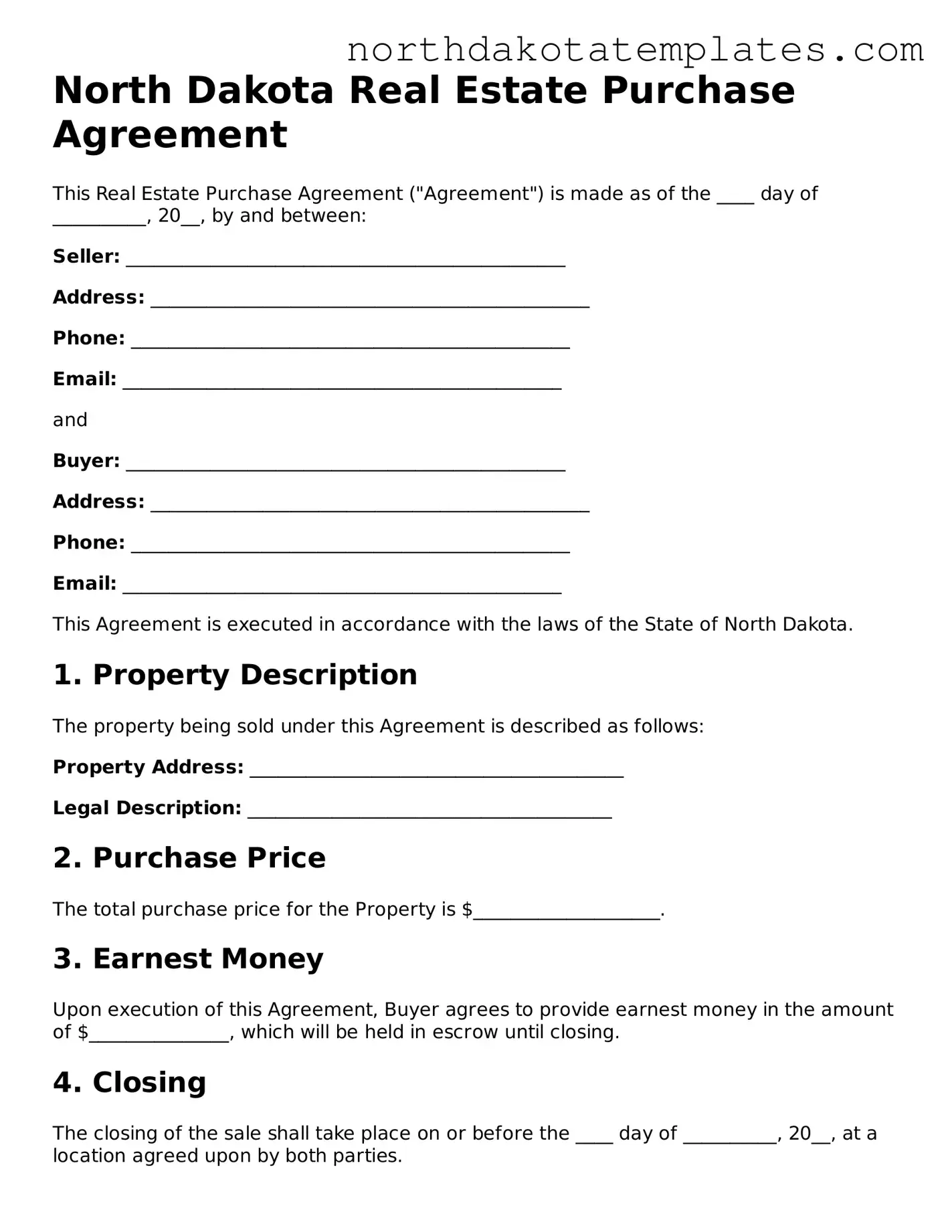North Dakota Real Estate Purchase Agreement
This Real Estate Purchase Agreement ("Agreement") is made as of the ____ day of __________, 20__, by and between:
Seller: _______________________________________________
Address: _______________________________________________
Phone: _______________________________________________
Email: _______________________________________________
and
Buyer: _______________________________________________
Address: _______________________________________________
Phone: _______________________________________________
Email: _______________________________________________
This Agreement is executed in accordance with the laws of the State of North Dakota.
1. Property Description
The property being sold under this Agreement is described as follows:
Property Address: ________________________________________
Legal Description: _______________________________________
2. Purchase Price
The total purchase price for the Property is $____________________.
3. Earnest Money
Upon execution of this Agreement, Buyer agrees to provide earnest money in the amount of $_______________, which will be held in escrow until closing.
4. Closing
The closing of the sale shall take place on or before the ____ day of __________, 20__, at a location agreed upon by both parties.
5. Contingencies
This Agreement is contingent upon:
- Buyer obtaining financing for the purchase.
- Inspection of the Property satisfied by Buyer.
- Any other conditions agreed by both the Seller and the Buyer.
6. Disclosure
Seller certifies that, to the best of Seller’s knowledge, all information regarding the Property is accurate and that Seller has disclosed any known material defects.
7. Signatures
By signing below, the parties agree to the terms of this Real Estate Purchase Agreement.
Seller's Signature: _______________________________ Date: ____________
Buyer's Signature: _______________________________ Date: ____________
8. Governing Law
This Agreement shall be governed by and construed in accordance with the laws of the State of North Dakota.
Both parties acknowledge that they have read this Agreement, understand it, and agree to be bound by its terms.
